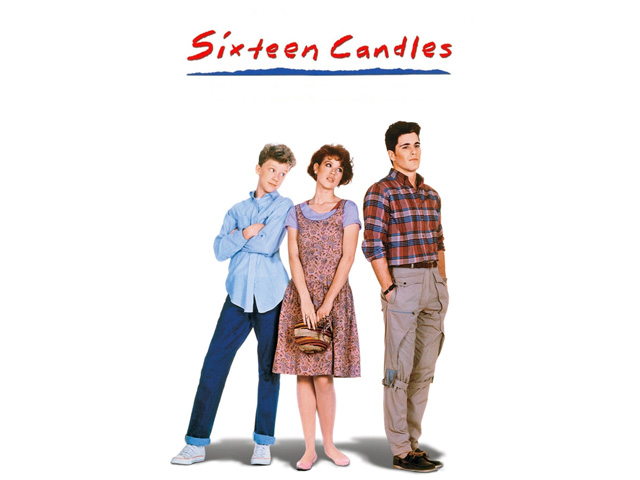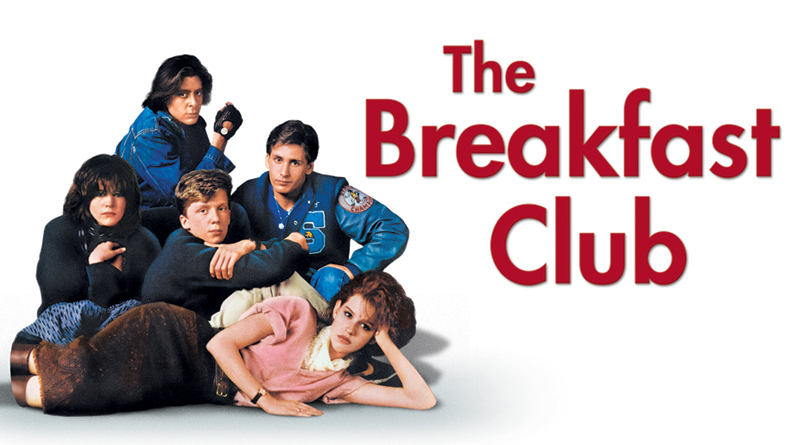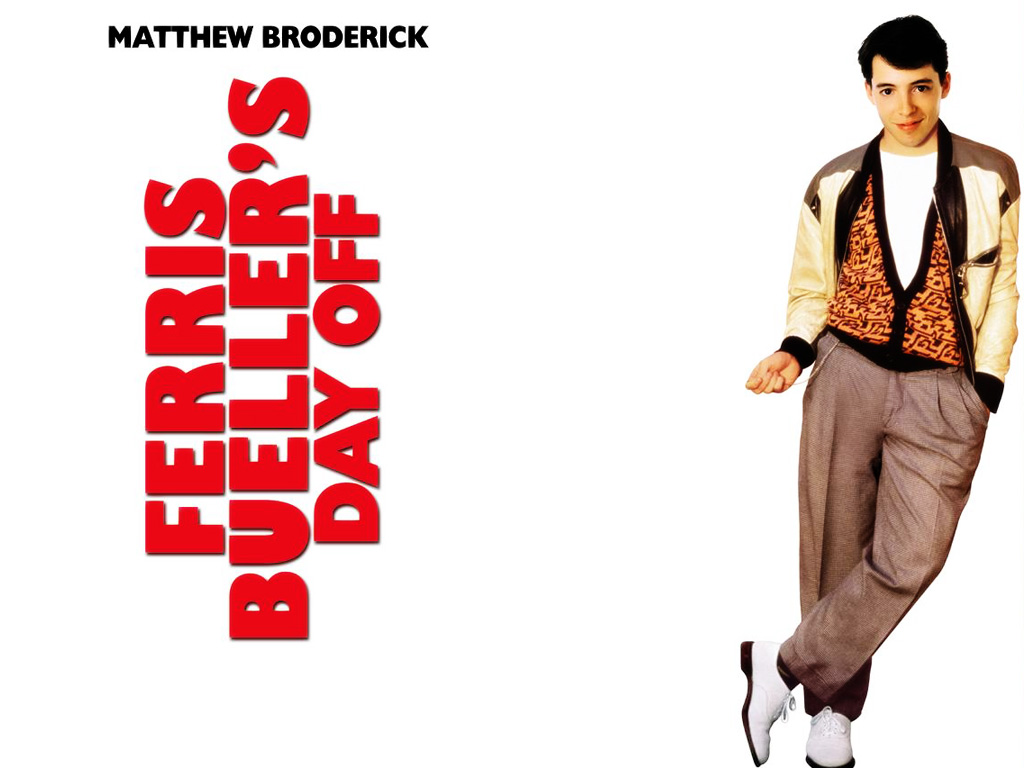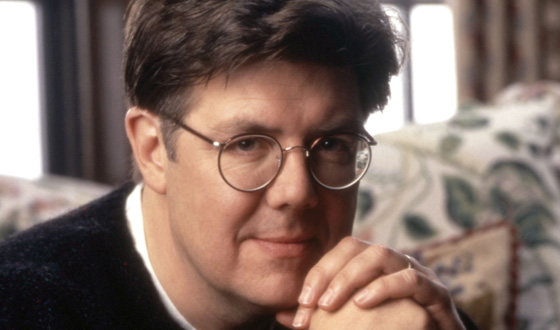During his life, John Hughes contributed much to Hollywood’s cannon of angsty teen films about white kids. He was a writer, a director, a producer, and even an actor sometimes.
His movies define the genre for the ’80s. For some, they define the 1980s. Hughes films cut the teen movie template by which every one since has had to prove itself.
For our purposes, we’ve selected five that Hughes not only wrote but directed. The settings change, often around Chicago, and the actors change too, but the story elements return like old friends. There’s the lunchroom scene, the one in the library, and almost always one person from the Brat Pack.
In case you’re wondering, the Brat Pack is Emilio Estevez, Anthony Michael Hall, Rob Lowe, Andrew McCarthy (even though he denies it), Demi Moore, Judd Nelson, Molly Ringwald, and Ally Sheedy.
Sixteen Candles

(source: scattershotband.com)
This was John Hughes’ directorial debut. At the time, sensitivity to heritage was nothing new, but somehow Hughes didn’t connect the dots for Asian Americans.
The character of Long Duck Dong, or The Donger, is iconic to the story. Played by Gedde Watanabe, The Donger’s lines are some of the most quoted lines in the movie. For Watanabe, a Utah-born kid, the role would haunt him for the rest of his life.
He scored the role by faking a Korean accent in the audition. His heritage is Japanese, but he got the part anyway. Even after admitting to Hughes that he faked the voice, he chose to keep Watanabe and the accent.
Then editors added a gong noise to every entrance by The Donger. It is, in short, offensive.
Despite an otherwise lovely movie, the treatment of Asian Americans in this film makes it unwatchable by many standards. Because of it, Watanabe would spend the rest of his life answering to Asian Americans about why he contributed to such a racially insensitive portrayal.
For Asian Americans growing up in the 80s and 90s, other kids calling you The Donger was status quo; a sad reflection on Hughes.
The Breakfast Club

(source: yucommentator.org)
For white kids in the 80s, The Breakfast Club was THE movie that explained everything we needed to know about the social dynamics of high school.
When I bought that trench coat from the second-hand story in 1987, I knew exactly who I modeled myself after. I was a John Bender.
During one scene in the movie, my personal avatar (Bender, in case I lost you) crawls in an airspace above a dropped ceiling. He’s rejoining the other characters in the library, telling himself a joke as he crawls on the precarious network of aluminum frames and ceiling tiles.
The joke begins, ”A naked blonde walks into a bar, carrying a poodle under one arm and a six-foot salami under the other…” Before Bender can finish, he falls through the ceiling into the library.
As it turns out, we’ll never know how the joke ended as it had no punchline.
Weird Science

(source: pier13hoboken.com)
The name of this film didn’t translate so well in other languages, so we ended up with versions like Touch Me, I’m Yours in Denmark, and Cool Magic With Lisa in Germany.
The name Weird Science came from the title of an old comic book, which inspired Hughes when he saw them stacked in producer Joel Silver’s office.
That’s not the only weird name association in this film. The name of the female lead, Lisa, Hughes took from Steve Jobs… sorta.
Apple’s follow-up to the Apple III, a project managed by Jobs, was the Lisa. The Lisa was an otherwise fine computer, overpriced for the value, remembered by historians as a fail.
Perhaps Hughes saw the missed opportunity in Lisa. Perhaps it was just a sexy name for a computer that fit the part. It’s better than The Donger.
Ferris Bueller’s Day Off

(source: guidelive.com)
Charlie Sheen makes a cameo as a drugged up punk in the police station.
In the scene, police have arrested Ferris’ sister for prank-calling the police. Sheen looks terrible, attributed to the actor staying awake for 48 hours prior to shooting so he would look disheveled.
According to a 1986 documentary by Inside Story, the character he plays, Garth Volbeck, has more backstory than you would otherwise know.
The character of Garth was once a friend of Bueller’s. Garth was pretty messed up back then. Bueller was unable to help him see how cool like could be.
When Garth dropped out of school, then turned to drugs, Bueller took it personally. It’s the motivation behind his desire to show his new friend Cameron how to enjoy life more.
Uncle Buck

(source: movieweb.com)
The fictional town of Shermer, Illinois appears in many of Hughes’ films. So does John Candy, except Candy was the genuine article. It would not be his last appearance either.
In fact, both Candy and Culkin would work on another Hughes’ film, Home Alone, which was inspired by a scene from Uncle Buck.
If you’re thinking of the scene where Uncle Buck flips pancakes with a shovel, you’re close. The shovel does make an appearance in Home Alone, but that wasn’t the scene.
It was the one where Culkin’s character taunts a woman through the mail slot. While filming that one scene, the idea for Home Alone ignited in Hughes mind. From that one moment, a whole movie grew, one that many people re-watch every Christmas.

(source: amc.com)
Sadly, we lost Hughes in 2009, but his movies live on.
Over time, his movies will likely fade in relevance, representing a time in history, but for the suburban white kids of the ‘80s, they remain relevant until the end.
These movies capture our youth, whether we saw ourselves as a brain, an athlete, a basket case, a princess or a criminal.

